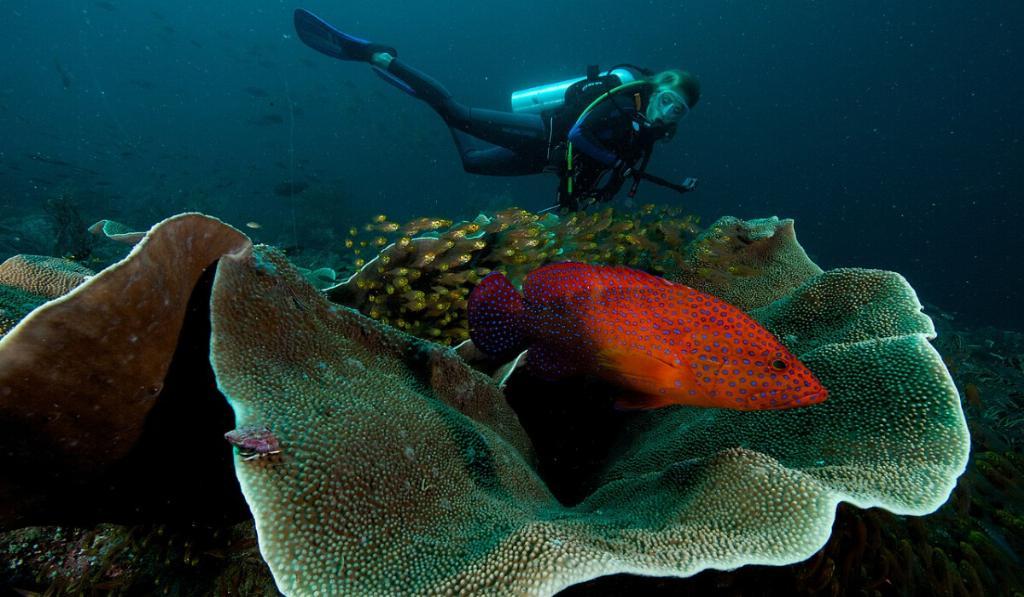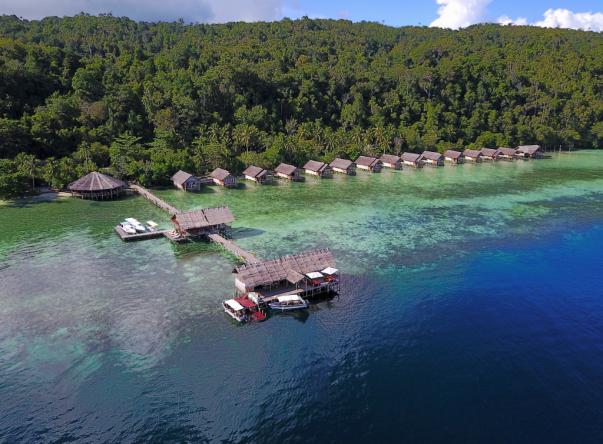Scuba Diving in Raja Ampat Islands
General Info
Diving Info
 Credit:
commons.wikimedia.org
Credit:
commons.wikimedia.org
 Credit:
www.flickr.com
Credit:
www.flickr.com
When to Visit
Mid-June through mid-September is the monsoon season which should be avoided because of the strong winds. In August, some liveaboards suspend their services and dives may be canceled due to weather.
Diving Conditions
The water temperature remains rather constant throughout the year; expect temperatures of about 80° F/26° C to 86° F/30° C.
Most dive sites have calm conditions but there are a few sites where one can experience strong currents that may require the use of a reef hook.
The visibility ranges between 30 feet (9 meters) to over 70 feet (21 meters) depending on the dive site. It’s not the best dive destination in terms of visibility because of the many nutrients in the water.
Types of Diving
Highlights
The Reef
Raja Ampat is at the heart of the Coral Triangle, an area that contains 30 percent of the coral reefs in the world. The archipelago has over 500 species of reef-building coral and it has the highest known diversity of reef corals for an area of its size. In fact, there are ten times more species of hard coral in Raja Ampat than you’d find in the Caribbean.
The reef is made up of giant corals, sea squirts, deer antler corals, and hard coral tables. Scientists have also found that the coral species in the archipelago may be more resistant to the threats caused by rising ocean temperatures as a result of global warming.
Marine Life
An epicenter of marine biodiversity, Raja Ampat numbers over 1,000 species of fish. Some of the aquatic animals you can see on a dive include sharks (five different species), manta rays, groupers, barracudas, schooling jacks, pale-tailed surgeonfish, giant angelfish, goatfish, pygmy seahorses, banded pipefish, triggerfish, giant morays, damselfish, fusiliers, Napoleon wrasses, and many, many other species.
Raja Ampat is also a great destination for macro photographers. On nearly every dive site there are a variety of species of nudiphiles. Other small animals you can find here are the blue-ringed octopus, ghost pipefish, pygmy seahorses, pearlfish, zebra crabs, peacock mantis shrimp, gobies, flying gurnards, and blennies, among many others.
Explore dive centers in the area

Agusta Island

Raja Ampat Islands

Waigeo Island

Raja Ampat Islands, Alor Island, Komodo, Banda Sea

Waigeo Island

Kri Island
Passionate About Diving?
Explore a comprehensive dive map, track your dives, upload your dive logs, connect with your dive buddies or other divers from around the world, and more.